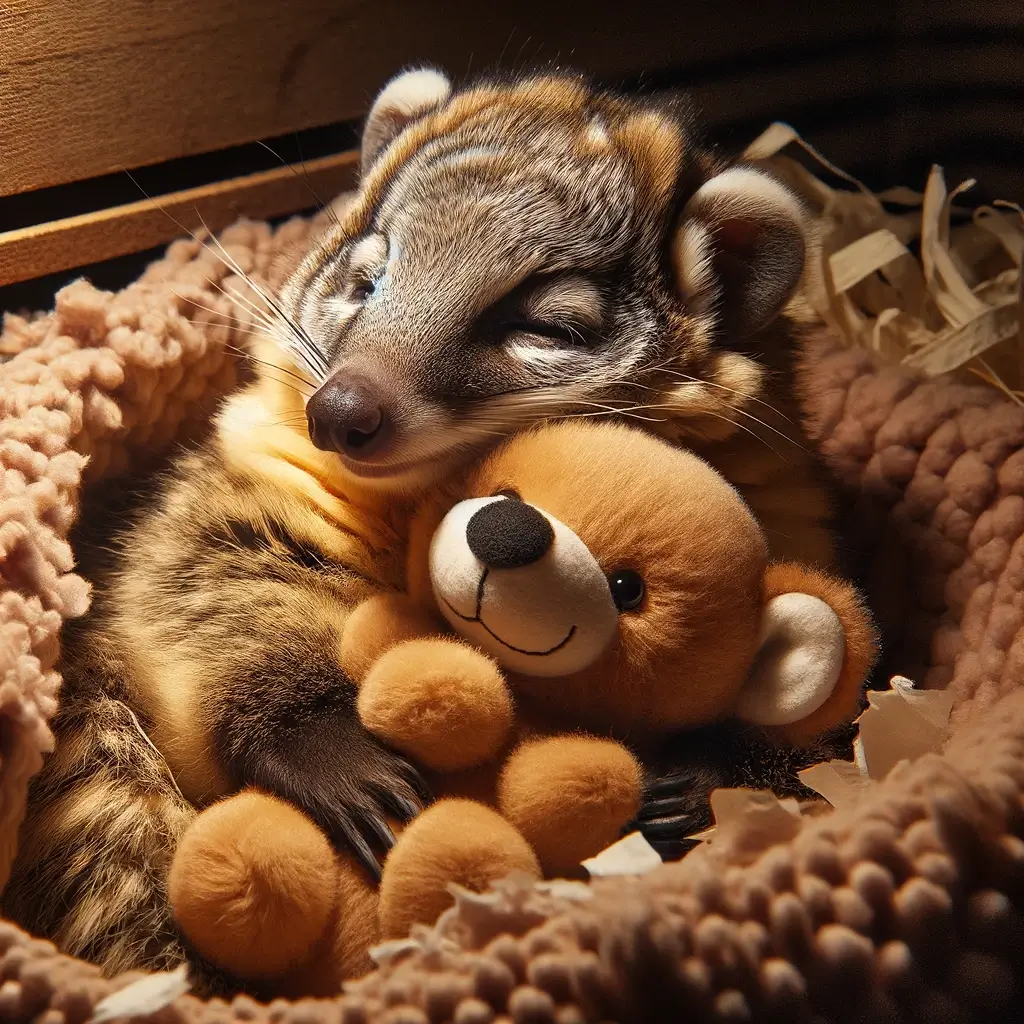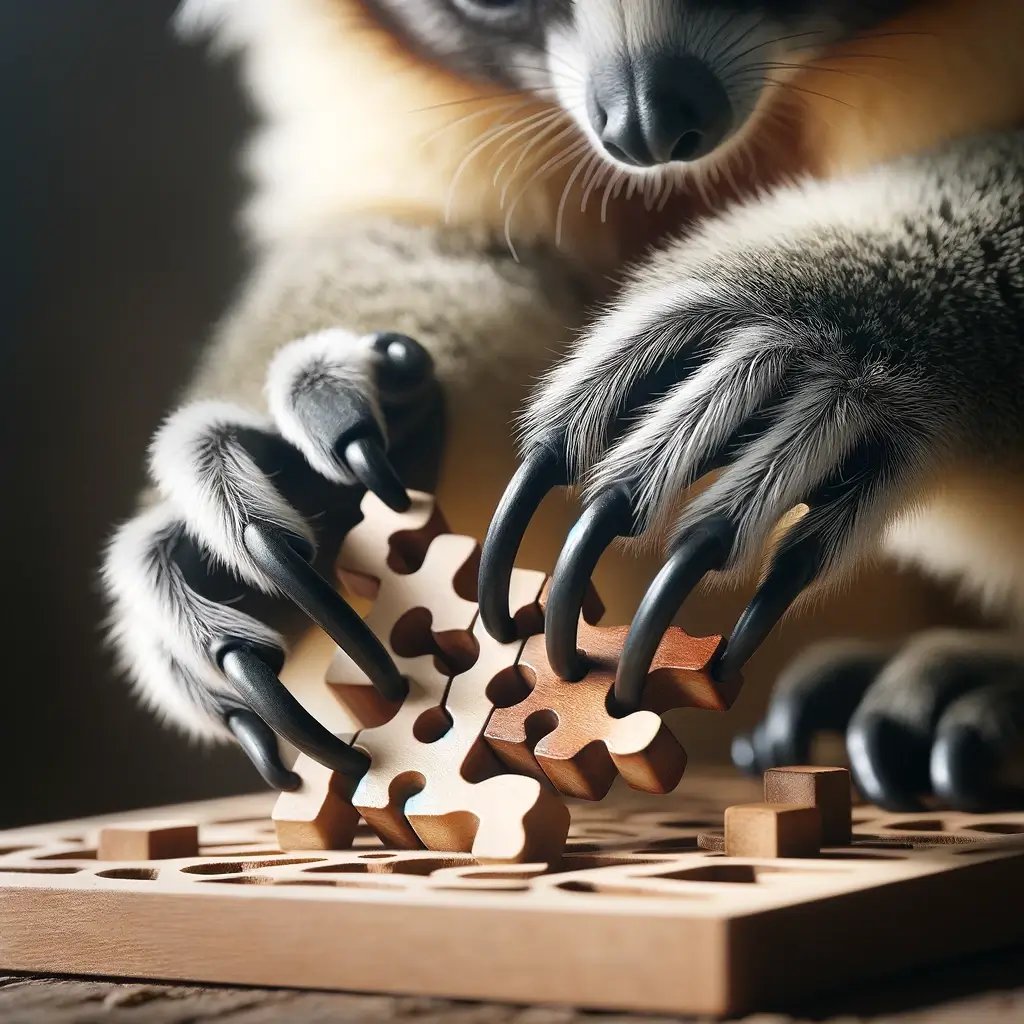
If you’re venturing into the world of exotic pets, a coatimundi can be a fascinating choice. As natives of Central and South America, these intelligent and sociable creatures, commonly known as coatis, are witnessing a rise in popularity as pets. However, before welcoming a coati into your home, it’s vital to grasp the nuances of their care. From their unique dietary needs to the specific requirements of their living environment, owning a coatimundi is both a rewarding and demanding experience. This guide aims to equip you with the essential knowledge on diet, housing, socialization, and training to ensure your coatimundi not only survives but thrives under your care.
FAQs on Caring for a Coatimundi
Coatimundi care raises many questions for prospective and current owners. Here, we address some of the most frequently asked questions about keeping these unique creatures as pets.
What Should I Feed My Coatimundi?
Coatimundis are omnivores, requiring a balanced diet of fruits, vegetables, meats, and insects. Avoid toxic foods like chocolate, avocado, caffeine, and alcohol. Always ensure they have access to fresh water.
How Big Should a Coatimundi Enclosure Be?
A proper enclosure should be at least 8 feet tall and 10 feet wide. It should offer both indoor and outdoor access, hiding spots, climbing structures, and enrichment toys to simulate their natural habitat.
How Often Should My Coatimundi See a Vet?
Regular veterinarian check-ups are crucial to prevent and treat common issues like obesity, dental problems, respiratory infections, and parasites. An annual check-up is recommended, but consult with your vet for a schedule that suits your pet’s specific needs.

Can Coatimundis Be Trained?
Yes, coatimundis can be trained using positive reinforcement methods. Early socialization and consistent training are key to managing their behaviors and ensuring they are comfortable with handling and commands.
Do Coatimundis Need Companions?
While coatimundis are social animals, introducing a companion requires careful consideration of their personality and needs. Compatibility and the introduction process should be monitored closely to avoid stress or aggression.
What Are the Legal Considerations for Owning a Coatimundi?
The legality of owning a coatimundi varies by location. It’s essential to research local laws regarding exotic pet ownership to ensure compliance with any permits or licenses required.
What Are the Biggest Challenges of Owning a Coatimundi?
Coatimundis are not domesticated animals and require a significant commitment in terms of time, attention, and resources. Their strong personalities, environmental needs, and health care considerations pose challenges but can be managed with proper knowledge and preparation.
Understanding the responsibilities and meeting the needs of your coatimundi are paramount for a fruitful companionship. Keep these FAQs in mind as you navigate the journey of exotic pet ownership.
Fun Facts About Coatimundis
Adding a touch of wonder to the Coatimundi Pet Care Guide, here are some interesting facts that showcase just how unique and fascinating these creatures are. These fun insights into the world of coatimundis might surprise you, and will surely deepen your appreciation for these exotic pets.
- Coatimundis, belonging to the raccoon family, are skilled climbers and can descend trees headfirst, thanks to their flexible ankles that can rotate 180 degrees.
- Their name “coatimundi” is derived from the Tupian languages of South America, meaning “lone coati.” However, female coatis are known to live in groups called bands.
- A coatimundi‘s snout is extremely flexible and can be rotated up to 60 degrees in any direction. This feature helps them forage and sniff out food efficiently.
- Coatis have a remarkable sense of smell that leads them to their food, which is often buried underground. Their long, dexterous noses make excellent digging tools.
- Unlike most pets, coatis are diurnal, meaning they are active during the day and sleep at night, making them align more closely with human schedules.
- Their vocal repertoire is quite extensive; coatis communicate using a variety of sounds including woofs, snorts, and chirps, especially in social interactions within their groups.
- Interestingly, coatimundis are one of the few animals whose females are significantly more social than males. Adult males usually lead a more solitary life, except during breeding seasons.
- Their tails, which can be almost as long as their bodies, are not just for show. Coatis use their tails for balance when navigating through the treetops and for communication during social interactions.
- Wild coatimundis are omnivores with a versatile diet. They eat a range of foods from fruits and nuts to small vertebrates and insects, showcasing their adaptive foraging abilities.
- Finally, baby coatis are called “pups,” and they are born blind and with a plain coat, developing their distinctive markings and the ability to see after a few weeks.
Each of these facts highlights the distinctive features and behaviors that make coatimundis such intriguing companions. Their intelligence, sociability, and agility add to the rewarding experience of coatimundi pet care, making every day an adventure.

Creating the Ideal Living Space for Your Coatimundi
A key factor in keeping a coatimundi healthy and happy is designing the ideal enclosure, which mirrors their natural habitat as closely as possible. This section dives into the critical elements you must consider when setting up your coati’s living space.
Temperature and Humidity Control
Coatimundis, originating from tropical climates, thrive in environments where temperature and humidity can be carefully regulated. A consistent temperature within the range of 70 to 85 degrees Fahrenheit and humidity levels of 40-60% create a comfortable atmosphere. These conditions prevent health issues related to overheating or dehydration.
Adequate Space for Exploration
The enclosure must be spacious enough to allow your coatimundi to explore, climb, and exercise. A minimum area of 8 feet by 10 feet, with vertical space height of at least 8 feet, is necessary. This space should be supplemented with branches, shelves, and ropes to encourage climbing, a natural behavior in coatis.
Lighting and Ventilation
Proper lighting aligns with the natural day-night cycle, supporting your coatimundi’s circadian rhythm. Natural sunlight is best; however, if that’s not possible, full-spectrum UV lights can be a good substitute. Adequate ventilation is equally important to ensure a fresh air supply, reducing the risk of respiratory issues.
Enrichment and Privacy Areas
Enrichment toys, puzzles, and foraging opportunities stimulate your coatimundi’s mind, keeping them entertained and mentally healthy. Additionally, inclusion of hiding spots and nesting areas provides a sense of security and privacy, important for their wellbeing.


Navigating Health and Wellness for Coatimundi
Vaccinations and Preventive Care
Here’s a comprehensive overview of the critical components of vaccinations and preventive care for your coatimundi:
- Initial Veterinary Consultation: Kickstart your coatimundi’s health journey with a personalized consultation from an exotic pet veterinarian. Get tailored advice on vaccinations, diet, and habitat specific to coatimundis, setting the stage for optimal care.
- Vaccination Protocol: Shield your coatimundi from common diseases with a customized vaccination plan, focusing on threats like rabies and distemper. Stay up-to-date on vaccines, adjusting based on location, lifestyle, and legal requirements for robust protection.
- Parasite Control: Safeguard your coatimundi’s well-being with regular deworming and flea control. Recognize signs of parasites and act swiftly, guided by your vet’s recommended schedule and products to maintain a parasite-free environment.
- Regular Health Screenings: Keep tabs on your coatimundi’s health through routine check-ups, spotting potential issues early. From blood tests to physical exams, these screenings are crucial for early intervention and overall well-being.
- Dental Care: Preserve your coatimundi’s dental health with regular check-ups and home care. Prevent plaque and gingivitis with chew toys and expert guidance from your vet, averting serious dental problems down the road.
- Nutritional Assessments: Fine-tune your coatimundi’s diet for optimal health, addressing concerns like obesity and nutritional deficiencies. Regular consultations with your vet ensure a balanced diet tailored to your pet’s unique needs.
- Emergency Preparedness: Be ready for any health crisis with a solid plan and knowledge of common issues. Keep emergency contacts handy and know where to find specialized care, ensuring your coatimundi’s safety and well-being in any situation.
Nutritional Balance and Diet
Ensuring a balanced diet is crucial for coatimundi health and longevity. Mimicking their natural food sources helps prevent obesity and deficiencies, promoting a vibrant life. Here’s how to achieve this balance:
- Protein: Ensure coatimundi health with animal-based proteins like lean meats, eggs, and insects, meeting their growth and repair needs while engaging natural instincts.
- Fruits and Vegetables: Provide essential vitamins and minerals through safe options like apples, carrots, and leafy greens, supporting digestion and overall well-being.
- Healthy Fats: Offer small amounts of nuts and seeds for energy and vitamin absorption, avoiding avocado due to toxicity risks.
- Occasional Treats: Bond with your coatimundi using sparing treats like cheese or exotic pet treats, but avoid overfeeding.
- Supplementation: Consider supplements like calcium or vitamins under vet guidance to fill any dietary gaps.
- Fresh Water: Maintain hydration for digestion and overall health, offering clean water constantly.
- Monitoring and Adjustment: Regularly assess weight and health, adjusting diet based on age, activity level, and health status.
- Consultation with a Veterinarian: Seek guidance from an experienced exotic pet vet for tailored dietary advice and supplements, ensuring optimal coatimundi health and happiness.
Exercise and Physical Health
Provide sufficient space for coatis to roam, climb, and play, supporting healthy weight and muscle development. Encourage natural behaviors like foraging and climbing with engaging activities to keep them active.
- Ample Space: Provide coatimundis with a large, secure enclosure featuring horizontal and vertical elements to mimic their natural habitat and allow for natural behaviors.
- Designed Activities: Engage coatimundis with foraging and climbing activities to stimulate natural behaviors, enhancing mental stimulation and muscle development.
- Regular Exercise Routine: Schedule supervised playtime outside the enclosure in secure areas to satisfy coatimundis’ curiosity and energy needs, promoting physical activity and exploration.

Mental Stimulation and Emotional Health
Mental health is vital for coatimundis. Combat boredom and destructive behaviors by providing puzzles, new toys, and interactive play sessions. These activities strengthen your bond and keep their minds sharp.
- Puzzles and Toys: Keep coatimundis mentally stimulated and curb destructive behaviors with interactive toys like puzzle feeders, encouraging problem-solving skills and engagement.
- New Experiences: Introduce variety by rotating toys and rearranging the enclosure, aiding mental stimulation and adaptation to change while reducing stress.
- Interactive Play Sessions: Strengthen your bond through interactive play and training sessions, using positive reinforcement techniques to encourage cooperation and mental exercise.
Stress Management and Social Needs
Manage your coatimundi’s stress by ensuring a stable environment and regular social interaction. Consider providing companionship with other coatis to fulfill their social needs.
- Stable Environment: Minimize stress by maintaining a consistent routine and gradual adjustments in a quiet, secure living space away from noisy areas.
- Social Interaction: Provide regular positive interactions and consider a compatible companion for your coatimundi, ensuring emotional well-being and preventing aggression through supervised introductions.
- Meeting Social Needs: Fulfill coatimundis’ need for companionship and play with daily social interaction, whether with humans or other coatimundis. Monitor their behavior closely to adjust their social environment as needed and keep stress levels low.
Focusing on these areas will help ensure that your coatimundi not only survives but thrives, bringing joy and curiosity into your life for years to come.
Beginner Guide to Raising Quail at Home
What are the Signs of a Dog Concussion?
What Causes Your Dog’s Ears to Smell Bad?
When your dog’s ears start to emit an unpleasant odor, it might leave you puzzled…
Methimazole Treatment for Cat Hyperthyroidism
Methimazole plays a crucial role in managing feline hyperthyroidism, a condition marked by an overactive…
Got Hummingbirds in your Backyard? Here’s How to Care for Them.
Why Does Your Cat Pee Outside the Litter Box?
Cat’s Litter Box Issues It’s not uncommon for cat owners to face the frustrating dilemma…




